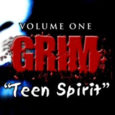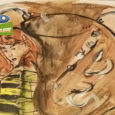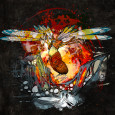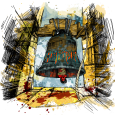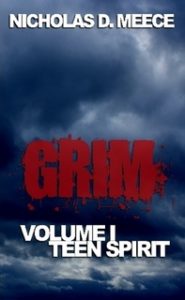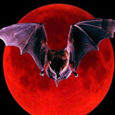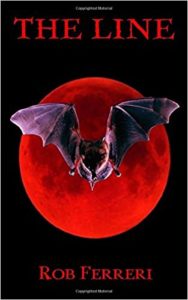 Vampires are a staple of Halloween and one of the most famous horror icons around. So I figured reading a vampire tale for Hallow-Reads was as good an idea as any. That’s when I was presented with The Line by Rob Ferreri, a self-published novel about a team of vampire hunters.
Vampires are a staple of Halloween and one of the most famous horror icons around. So I figured reading a vampire tale for Hallow-Reads was as good an idea as any. That’s when I was presented with The Line by Rob Ferreri, a self-published novel about a team of vampire hunters.
The Line tells the story of Alexander, an immortal ex-vampire and his mission to hide an ancient amulet from Dorian, his ex-master. When the amulet is discovered in present day New York, Alexander assembles a team to help him combat the vampire threat and protect the amulet. The team, which he dubs “the Line” are chosen ones, people who come from a long line of vampire slayers. The plot boils down to Buffy the Vampire Slayer meets The Avengers and works in many ways. However, there are quite a few ways that it just falls flat.
The book opens with a scene of our Alexander being healed of his vampirism and turning against his former brethren. It’s an interesting concept, one that doesn’t get explored often in pop culture, but it also doesn’t get explored much here, either. We know Alexander had a history as a vampire and worked with Dorian, but Ferreri never delves into that. There’s no back story showing us how Alexander became a vampire or what regrets he may have. We’re only told he was a vampire, isn’t any more, and now wants to rid the world of vampires.
The dialogue tags were the most tedious part of the book. Dialogue tags should be straightforward as the most effective ones are a simple “she said” or “he asked.” Sure, it’s great to mix them up a bit for some exclaiming, questioning, or accusing. But The Line makes them all as homogenous as possible. Every dialogue tag follows all of the dialogue. Every time. Now, this isn’t how most authors handle it; in scenes with two characters, for example, it’s generally easy to follow the flow of the dialogue, making the need for a tag each time unnecessary. But Ferreri uses them for every line and it gets very distracting.
From my understanding, The Line was originally written as a screenplay, and after reading it, that’s fairly obvious. The dialogue tags, for example, reminded me of slugs, the character name that precedes each line of dialogue, making it easy for the actor to know which lines are theirs and which belong to their costars. Sure, Ferreri punches up his dialogue with adverbs, but these are little more than parentheticals, the stage direction used to indicate how the actor should deliver the line.
This isn’t the only similarity The Line as a novel has to a screenplay. The book focuses a lot on the action; every few pages, a new action scene occurs. Whether it’s a showdown between the protagonists and the bad guys or some sort of training exercise, action scenes take precedence. Which makes sense considering The Line is a vampire based action adventure more than anything else. However, this focus detracts from any sort of character development, of which there is very little.
The Line is straight forward, to the point, and exactly what one could expect from a ninety minute action flick.
Does a novel need chapters of deep backstory to be enjoyable? No, not at all, but unlike movies, novels aren’t constrained by a certain length. There’s no hard and fast rule that a novel should be a set number of pages. In that sense, novels have an advantage over films when it comes to character development.
The Line implements a sort of ticking clock, yet another action movie trope. Alexander and Co must stop Dorian from getting the other half of the artifact before the next lunar eclipse or the world will suffer. Because of this, the plot moves at hyperspeed. Characters are introduced, destinies explained, trainings held, and lots of fight. There’s no time to get to know the cast. We see them put through the wringers of training a total of one time before they accept their fate. They trust each other implicitly after knowing each other for at most a couple of days. There’s very little internal conflict and it gets resolved in a page or two, which diminishes the stakes.
The parallel between The Line as a novel versus a screenplay makes sense when you look at author Rob Ferreri’s history. He’s worked on a few full-length feature films, most of which were made prior to the publication of The Line. He clearly has a strong grasp of writing, but it seems that scripting is a difficult habit to shake. Novels and screenplays are two different creatures and what works in one doesn’t necessarily work in the other. I don’t feel that his writing style is bad; just that it’s not the ideal approach for a novel.
Don’t get me wrong; there are quite a few good parts about The Line, most notably the character introductions. When we meet each of the characters, they get the spotlight in their own little vignette of a story. Detective Jay Hong is ambushed during one of the biggest cases of his career. The Blades brothers, Diego and Julian, are career criminals and we first see them during a high-octane car theft and eventual chase. Lena Somnianti is a sophisticated artist and fencer, a well-travelled and intelligent woman. They all make grand entrances, yet don’t really live up to their promise. Sure, they’re competent enough in their own right but none of them ever feel fleshed out besides what we learn at the outset.
This is really the fatal flaw of The Line. It never really lives up to its own story. It’s complete, has a plot and a diverse cast, but that’s the bare minimum when dealing with a novel. As a film, The Line would have been magnificent fun. More Underworld than Anne Rice, it didn’t quite fit into my idea of “horror” so it probably wasn’t the best entry for Hallow-Reads, but I still found myself engrossed in the tale as it unfolded.
The Line is available on Amazon. You can also see more of Ferreri’s work by visiting his comic publisher, Evil Kat Comix.
Grade: C
Don’t forget to try our Ten Family Friendly Halloween Movies to help lull the kiddos into a candy coma! Afterward, you can set the mood with Five Albums to Flesh Out Your Halloween Playlist and huddle under the covers with Netflix and Chilling – Halloween Movie Edition. Any other off-beat Halloween suggestions to throw our way? You can let us know on Twitter @SubCultured or come party like its 1599 in our Discord server!
Halloween is one of my favorite holidays. Besides all of the cute decorations, cooler weather and delicious special edition food and candy, it’s also the time to plant oneself in front of the television and binge watch scary movies. But what does one do when movies get boring? Turning to books is usually a good idea. Thankfully there’s a subset of writers who focus on telling spooky, scary, or downright grisly tales that are best enjoyed during Halloween. I had the chance to check out one of these tales, Grim, Volume I: Teen Spirit, by Nicholas Meece.
Teen Spirit starts with a grisly murder outside of a nightclub in a small town before transitioning to the story of Steve, a teenager and budding writer, and his best friend, Jen. They share a passion for filmmaking and horror movies, so when Steve tells Jen about the murder and convinces her to investigate it with him, she’s all in. The murders don’t stop there, though, as the Reaper, as he’s known, tears through the town, killing people very close to Steve’s and Jen’s houses.
While I enjoyed Teen Spirit, I do have to say it’s full of missed potential. There are a lot of great moments in it, such as the opening prologue with the murder, which sets the tone for the horror-themed story. However, once our main characters are introduced, a lot just seems to get lost along the way. We meet Steve and find his passion for writing leads him to lock himself in his bedroom for hours on end to finish a work in progress. He’s secretive about his hobby, not allowing anyone to read his stories until he feels they are perfect. He’s in love with his best friend Jen and wants their relationship to blossom into more than just friendship, but they also plan on moving to California and living together, which is slightly weird but at least makes some sort of sense.
Steve gets the most depth while, unfortunately, Jen is more of a one-note character. We know she’s interested in filmmaking and wants to move to California. She likes Steve’s company but doesn’t see him romantically like he sees her. That is, until she’s told that she does see him romantically by a mutual friend. It’s an odd exchange and one that doesn’t really feel natural. In fact, most of the women in the book come off as caricatures, more like plot devices than real women. The exchanges between Jen and her friend Angela feel forced and stilted. There are so few of them that they’re easy to overlook, but the book is so short that these exchanges are huge chunks of the word count.
I thought the story started to pick up around the time Steve convinces Jen to investigate the murder with him. This could have made for an interesting tale and was the thread that I was most looking forward to; two teenagers struggling to use second hand knowledge of police procedurals and figure out who committed a grisly murder would have made for an intriguing tale. Couple that with the twist ending and Steve’s true agenda could have made it even more engaging. It soon becomes apparent, though, that their sleuthing isn’t the purpose of the tale. Meece is taking his love for horror movies and creating a slasher story. However, with a little fleshing out, he could have blended the two genres and created something with a little more meat on the bone.
That’s not to say Teen Spirit isn’t entertaining. It’s just heavily bogged down in horror movie tropes. A couple of fresh out of school kids in their sexual prime. An alcohol-fueled house party that swells out of control. The caring, housewife who’s concerned for the wellbeing of her taciturn son. The inclusion of all of these seem intentional based on Meece’s love of horror. After reading through Teen Spirit, I didn’t quite make this connection and the tropes bothered me. However, I dwelled on the story for a few days before starting writing this and I developed a deeper appreciation for it.
It’s hard for me to go into depth for a review of Teen Spirit only because of how short the story is. I read it entirely in a single train ride of only about an hour, which isn’t a lot of time for a “book.” That’s why my biggest disappointment with Teen Spirit is its length. As I mentioned earlier, there were plenty of areas that Meece could have elaborated on the story, delving deeper into character histories and motivations and actually following through with Steve and Jen’s intentions of tracking the killer. I assume he didn’t do this because he intended to write a short and sweet slasher tale which, if that is the case, he at least succeeded in doing. One benefit Teen Spirit does have is its cliffhanger ending, hinting at a much larger story looming in the distance. As of the time I’m writing this, there has not been a release of Grim, Volume 2, which is slightly disappointing. Hopefully, that’s still on Meece’s “To Do” list and hasn’t been abandoned completely.
All in all, I would recommend Grim, Volume I: Teen Spirit if you’re bored with horror movies on Netflix and are just looking for a change of pace. While it’s not as deep as a Stephen King novel, it provides a quick dose of horror-fueled entertainment. Not too long to get boring, but just long enough to create a creepy, slasher atmosphere. And if you crave more, you can always check out Meece’s non-fiction and movie reviews over at www.morbidmuch.com. He’s definitely a proponent of horror and a voice that adds to the genre.
Grade: B-
Don’t forget to try our Ten Family Friendly Halloween Movies to help lull the kiddos into a candy coma! Afterward, you can set the mood with Five Albums to Flesh Out Your Halloween Playlist and huddle under the covers with Netflix and Chilling – Halloween Movie Edition. Any other off-beat Halloween suggestions to throw our way? You can let us know on Twitter @SubCultured or come party like its 1599 in our Discord server!


